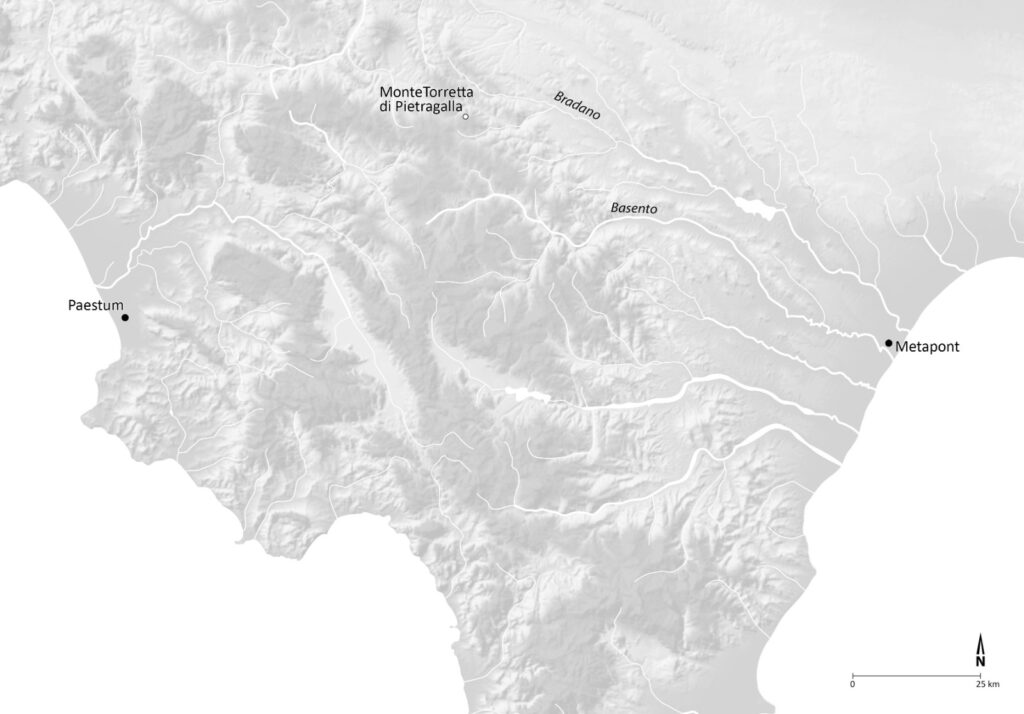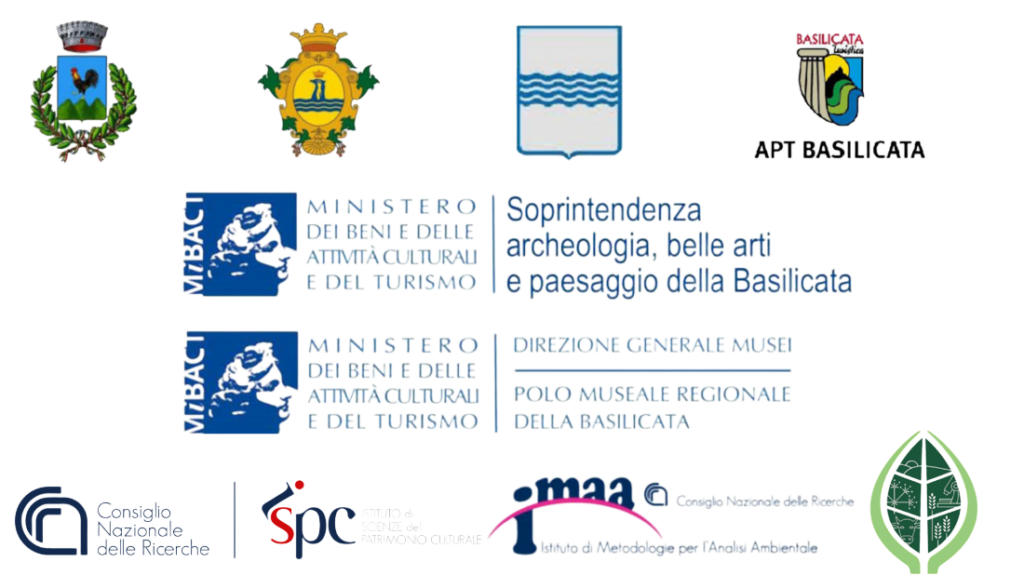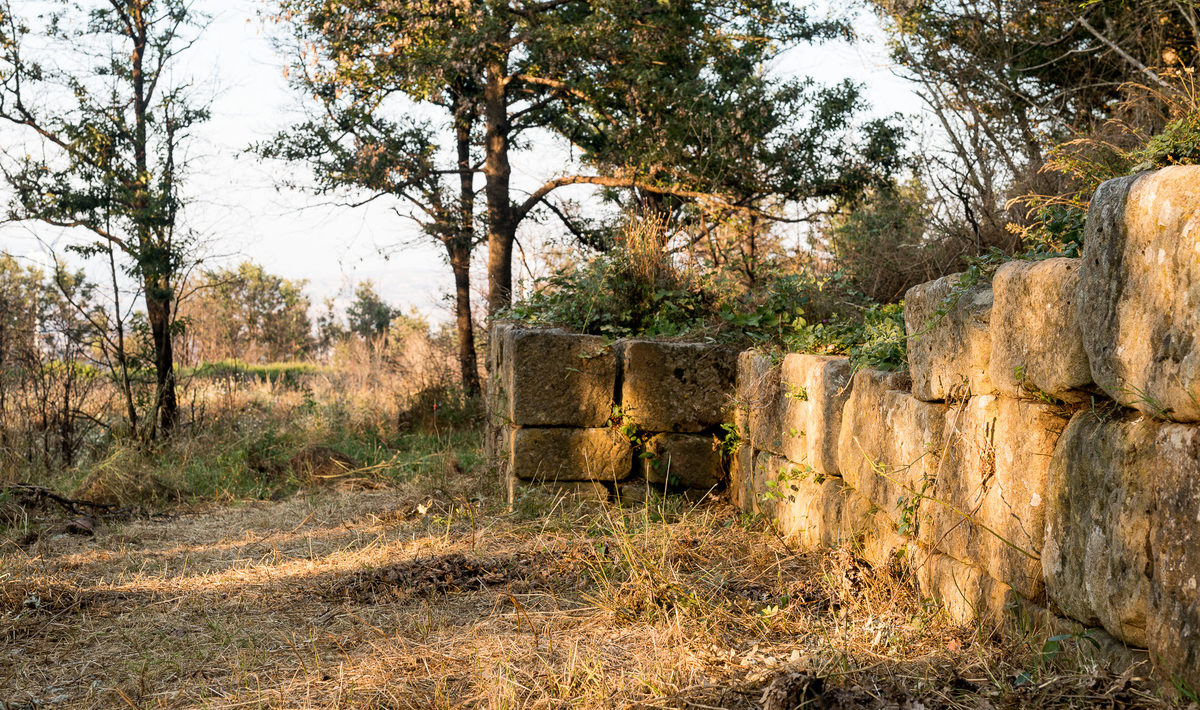
The Pietragalla Project is an international research program established by the Université Paris 1 Panthéon-Sorbonne and the Humboldt-Universität zu Berlin, which has as its main objective the study and promotion of the archaeological and cultural heritage of the archaeological site of Monte Torretta di Pietragalla, located in Basilicata, Italy. Thanks to the collaboration with local archaeological institutions, it was possible to re-evaluate the still unpublished scientific documentation relating to the site, which has been investigated in the middle of the 20th century, highlighting the still unexpressed potential that still lies unearthed on the summit of Mount Torretta.
The project actively involves the collaboration with various and prestigious Italian institutions: the Soprintendenza Archeologia Belle Arti e Paesaggio della Basilicata, the school of agriculture and forestry of the Università della Basilicata, the Museo Archeologico Provinciale of Potenza, two laboratories of the Italian CNR specialized in remote sensing, but also political and cultural entities such as the Comune di Pietragalla, the agency for local tourism APT Basilicata and the Regione Basilicata.
Alongside scientific objectives, the project aims to train students and young researchers in field archaeology, remote sensing, promotion of sustainable cultural heritage, through practical experience in relation to a research project and in relation to the local authorities responsible for the protection and cultural development of the site and the region.

The main objective of the project is to re-examine the complex question of the lucanization of the region, i.e. the term with which historians and archaeologists designate that set of transformations that come to invest the Lucanian world starting from the middle of the V century BC and that some interpret as the result of the invasion by Samnite populations coming from the north, and others as the result of an internal evolution of the indigenous populations. A crucial point concerns the fortified hilltop settlements that begin to rise in the whole Lucania during the IV century BC.
Precisely for these reasons the archaeological site of Monte Torretta di Pietragalla represents a privileged observatory for dealing with these issues. It is above all a fortified hilltop site, on the northern edge of Lucania. It is an important regional crossroads that in addition is inscribed in the long lifetime: unlike many other sites Lucanian emerged almost suddenly during the IV century BC., Monte Torretta di Pietragalla testifies a more or less continuous occupation from the end of the Geometric Age with some faint traces of the Neolithic and Bronze period, until the II century BC, that is after the Roman conquest and the resulting Romanization of the region.
Through an interdisciplinary approach that crosses new data recovered during fieldwork with the study of early excavations’ material culture, the scientific programme of the Pietragalla Project aims to give a concrete answer to such long-standing questions in the framework of Lucanian studies, following a cultural anthropology perspective. In this initial phase of research, three enquiry points ha been define:
1.Return to the debated issues of the Lucanian fortified settlements datation, through a renewed study of the Monte Torretta’s fortification system, preserved almost entirely, but never stratigraphically excavated (and therefore without chronological data) and never the object of a complete and detailed topographical survey (that can allow to understand the precise nature and the construction techniques).
2.Understand the articulation of the settlement in particular the relationship between the two stonewall circuits, the relationship between the intra-muros and the extra-muros space, as well as the relationship between the hill of Monte Torretta and the adjacent hill of Monte Solario, the latter undoubtedly occupied between VII and III century BC.
3.Interpret the context of discovery of the main artefacts coming from Monte Torretta di Pietragalla and preserved at the Museo Archeologico Provinciale of Potenza, even without being able to reconstruct the precise conditions of the finding.

